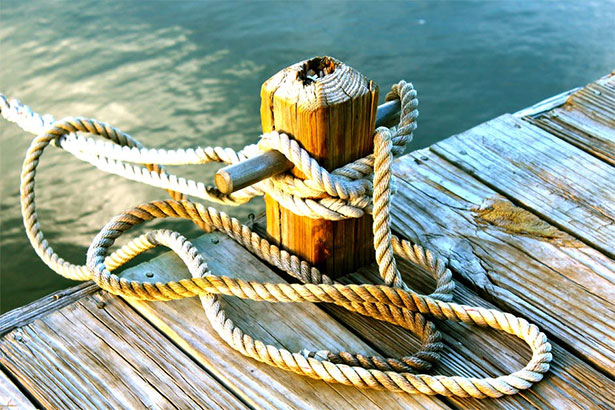A Concise Guide to Marine Ropes & Their Uses

All About Maritime Ropes
As one of the foremost marine suppliers and chandlery services in South Africa, the team at Link Ship Chandlers has a borderline geeky love of all thing shipping and sailing. This extends to all tools of the shipping trade, and marine ropes in particular. Here is a concise guide to the most common marine ropes and their uses (you never know when it might come in handy during a general knowledge quiz!).
Three-Strand Ropes
These ropes are normally made from fibres like nylon, polypropylene, sisal, copolymer or manila, and are the most affordable. It consists of yarns (many tiny fibres twirled together), which are combined into strands. Three-strand ropes are stretchy and good for splicing and knotting.
DID YOU KNOW? Unlike a simple overhand knot or a figure eight knot, a sailor’s knot does not come loose easily. The easiest way to tie a true stopper knot is by using your hand as a form. Just loop the end of the line twice around the palm of your hand, tuck the working end under the two loops, and then pull the loops off your hand.
Eight-Strand Ropes
Eight-strand ropes are normally made from polypropylene, polyester, or nylon; and comprises four left-hand-laid strands and four right-hand-laid strands. The torque of these ropes are well balanced, it can be spliced easily and it is resistant to abrasion, making it ideal for use on commercial vessels.
DID YOU KNOW? You can lessen rope corrosion by washing and drying your ropes in the sun every now and again to remove any grit and dirt that might have gotten stuck in its weave.
Twelve-Strand Ropes
Twelve-strand ropes are normally made from polyester or; and comprises six left-hand-laid strands and six right-hand-laid strands. These ropes can be spliced easily and it is resistant to abrasion, making it particularly durable and strong – ideal for use when dealing with extreme weights.
DID YOU KNOW? This phrase ‘show the ropes’ has its origins in the golden age of sailing, when understanding how to handle the ropes necessary to operate a ship and its sails was an essential maritime skill.
Double-Braid Ropes
Double-braid ropes are normally made from spectra core, nylon, and polyester; and comprises braided core that is sheathed in braided jacket cover. These ropes can withstand equal weight on core and jacket and boast a particularly high strength-to-weight ratio. As such, it is one of the most popular kinds of rope aboard any marine vessel.
DID YOU KNOW? After a piece of rope has been deliberately cut, sized, merged, and used for a particular task, it is referred to as a ‘line’, particularly in marine terminology.
Good to know, right? Keep an eye on the Link Ship Chandlers blog in coming weeks and months for more interesting and useful shipping-related info. We look forward to keeping you informed!
This entry was posted under Maritime Facts and Stories












Leave a Reply